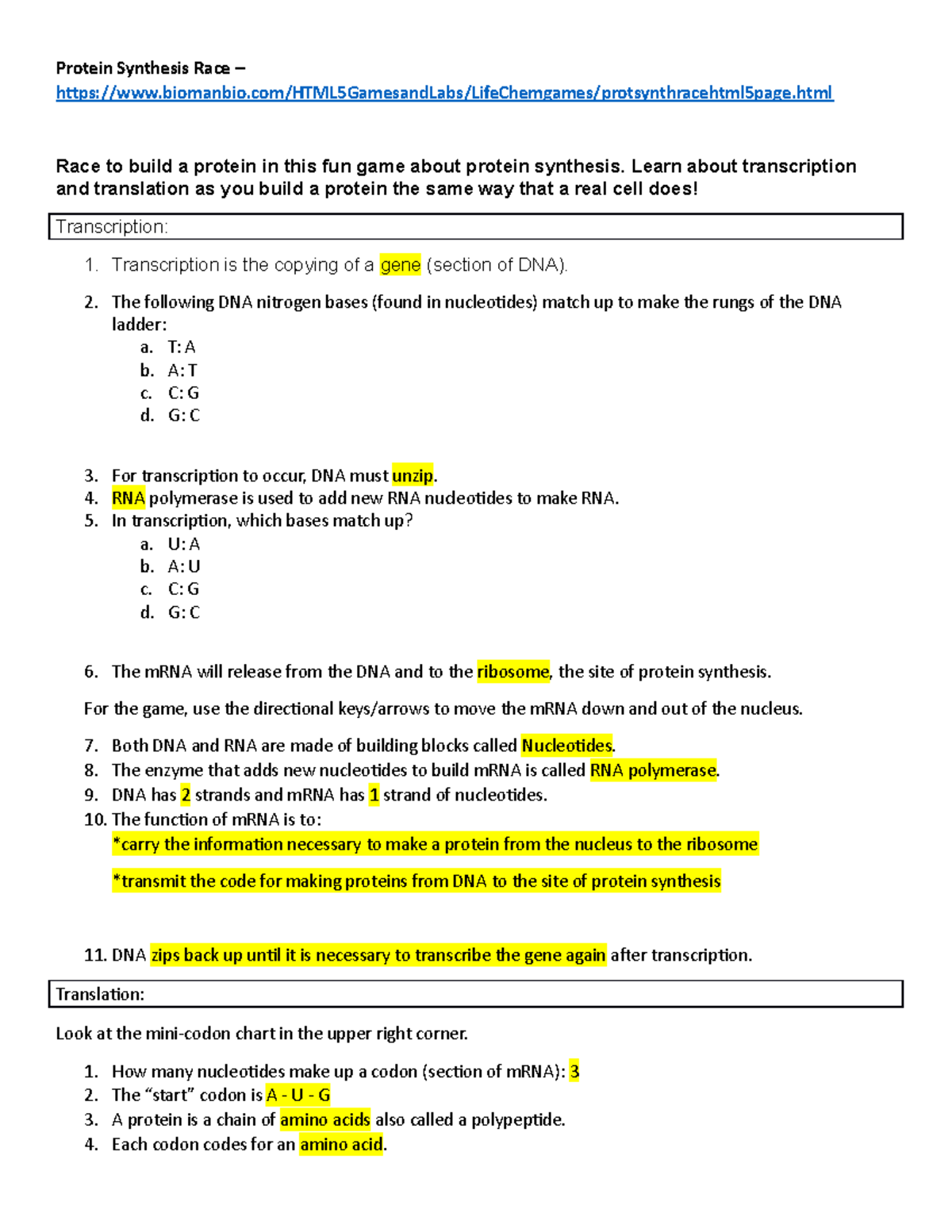Protein synthesis is a fundamental process in all living organisms. It is the process by which cells build proteins using instructions from DNA. This complex process involves multiple steps and is essential for the growth, development, and functioning of an organism.
A worksheet on protein synthesis can help students understand the intricacies of this process. By working through the worksheet, students can gain a better understanding of how DNA codes for proteins and how proteins are synthesized in the cell. It can also help reinforce key concepts and terminology related to protein synthesis.
Overview of Protein Synthesis
Protein synthesis involves two main stages: transcription and translation. During transcription, the DNA code is transcribed into messenger RNA (mRNA) in the cell nucleus. This mRNA then travels to the ribosomes in the cytoplasm, where translation takes place. During translation, the mRNA code is read by transfer RNA (tRNA) molecules, which bring specific amino acids to the ribosome. The amino acids are then linked together to form a polypeptide chain, which folds into a functional protein.
Worksheet questions on protein synthesis may cover topics such as the role of DNA, mRNA, tRNA, and ribosomes in the process, the genetic code, the sequence of amino acids in a protein, and the different types of RNA involved. Students may also be asked to identify the start codon, stop codon, and codons that code for specific amino acids.
Additionally, students may be asked to complete diagrams or fill in blanks in a sequence of events related to protein synthesis. These activities can help students visualize the process and understand how the different components work together to build a protein. It can also help reinforce the importance of accurate transcription and translation in protein synthesis.
Overall, a worksheet on protein synthesis can be a valuable tool for students to deepen their understanding of this essential biological process. By engaging with the material through questions, diagrams, and activities, students can improve their knowledge and retention of key concepts related to protein synthesis.
In conclusion, a worksheet on protein synthesis can provide students with a hands-on opportunity to learn about this complex biological process. By working through the worksheet, students can reinforce their understanding of transcription, translation, and the role of DNA and RNA in building proteins. This interactive approach can help students grasp the intricacies of protein synthesis and appreciate its importance in living organisms.
